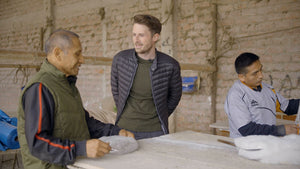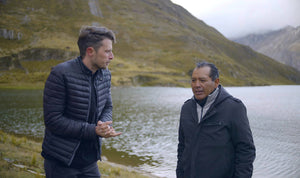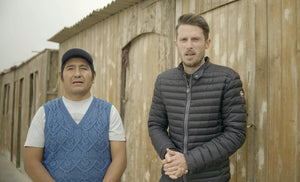transparency
An integral part of our company philosophy is a value chain that is as transparent and efficient as possible for all parties. That is why we are presenting the three core elements of our production chain exclusively to you below. How could this be better explained than by the people involved themselves, transparently and directly: the manufactory near Lima, the middleman who collects the raw materials from the farmers at the local markets in the highlands of the Andes and the alpaca farmer who lives the ultimate harmony of man, animal and nature far away from any civilization.

The manufactory
The manufactories buy the raw materials for our products from intermediaries and process them into exquisite, high-quality end products. The skins are first selected according to size, soaked, cleaned and prepared for tanning. After tanning, the water used is collected by specialized companies and neutralized so that it cannot harm the environment. After tanning, the skins are washed again, dried and selected for dyeing. The skins selected for dyeing are tanned a second time and then selected for making up. This is where the cutting and finishing of our high-quality products takes place.

The middleman
The middlemen who buy the raw materials for our products from the alpaca farmers specialize in trading the soft wool. They buy the products from the alpaca farmers in the Andes and then sell them on in various places in Peru, such as Juliaca, Arequipa. From here, the high-quality raw materials are then processed into unique products in small factories. Occasionally, for example when animals have died or been slaughtered for their meat, they also buy the fur to sell on at the various markets in Peru. However, the trade in high-quality wool remains the main business of the middlemen.

The alpaca farmer
The alpaca farmers in the highlands of the Andes keep the animals primarily for their productive and exquisite wool. The wool produced during the annual shearing is mainly used in the clothing industry. The alpacas' fur only brings in a small yield, which is why no animals are slaughtered for their fur, but only the skins of alpacas whose lives have either come to a natural end or whose skins are a waste product of meat production are processed. This can be caused by climatic changes, contaminated water, fights between the animals or predators. It is therefore in the alpaca farmer's best interest that his animals are healthy and happy.







